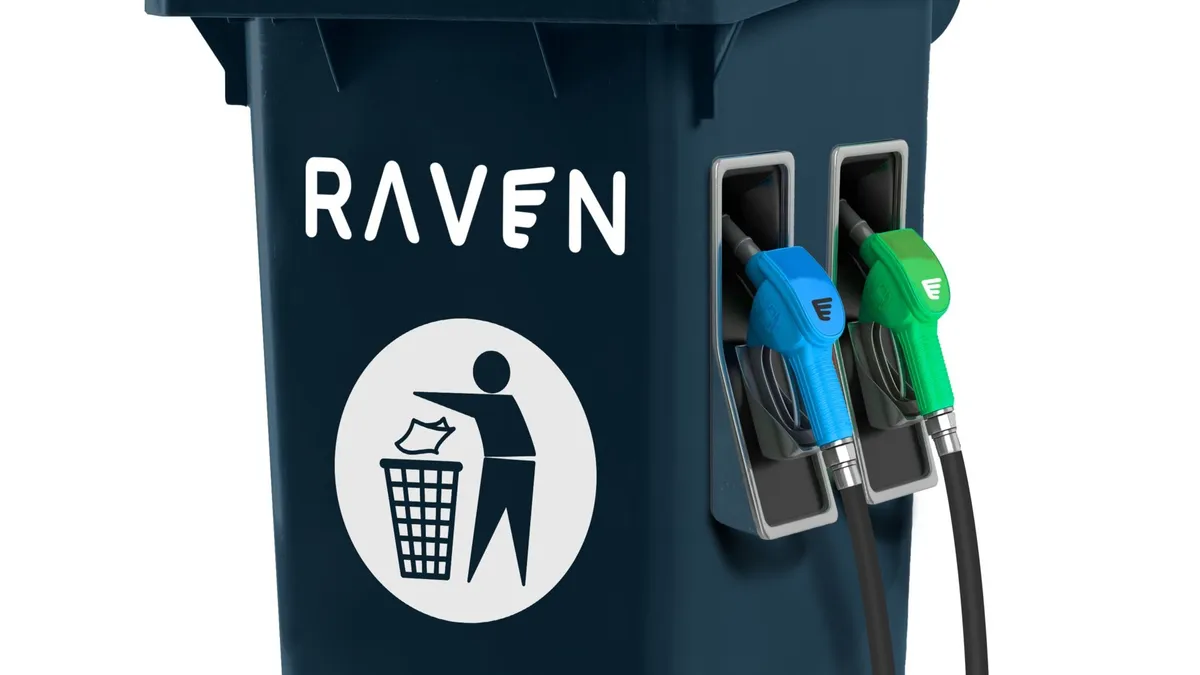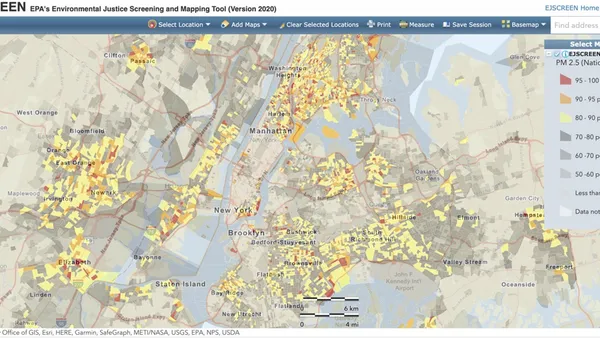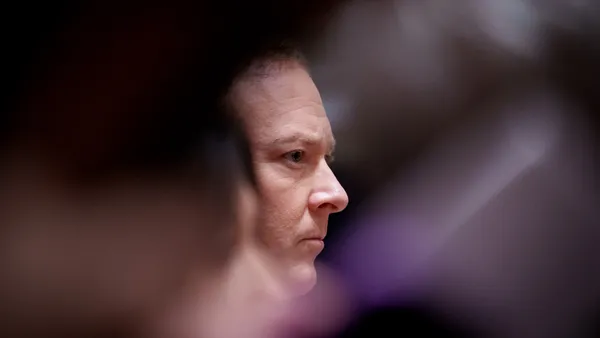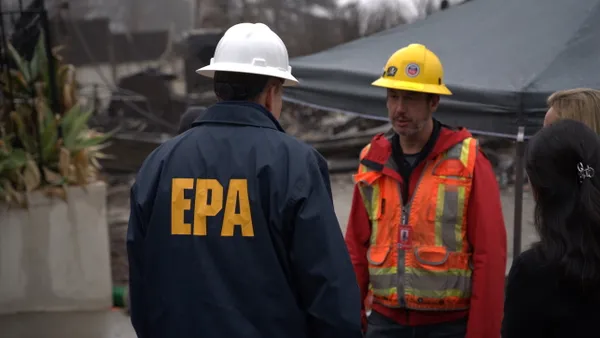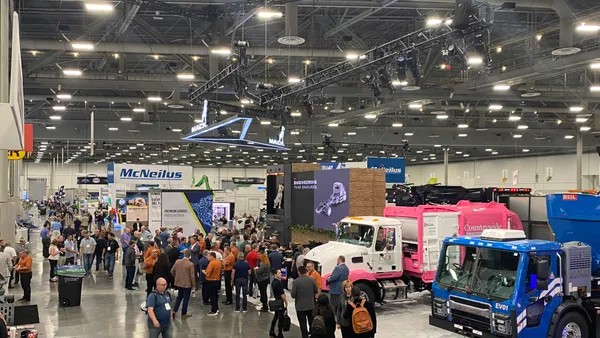Dive Brief:
- Republic Services recently announced an arrangement with Raven SR to process upward of 99.9 tons of organic waste per day at the West Contra Costa Sanitary Landfill in Richmond, California, and create up to 2,000 metric tons per year of green hydrogen.
- Raven plans to sell the hydrogen to commercial fueling stations, as well as to zero-emission truck manufacturer Hyzon, and achieve a negative carbon intensity under the state's low carbon fuel standard (LCFS) credit. This site, along with one at a yet-to-be-announced California landfill, is set to open by summer 2022.
- Raven is coming off a $20 million investment, with backers including Chevron and Hyzon. It previously announced plans to build up to 250 hydrogen hubs with Hyzon, starting with these California sites.
Dive Insight:
Hydrogen is currently seeing heightened interest in the utility and transportation sectors. Steam-methane reforming (SMR) remains a primary method for hydrogen production, but it's considered a "brown," fossil fuel-based source as opposed to "green" hydrogen, which is most commonly produced via electrolysis powered by renewable energy. Raven describes its non-combustion process as being another green method that uses less water than electrolysis and could be self-sustaining in terms of energy usage.
While these broader fuel and energy production trends aren't expected to have near-term applications in the U.S. waste industry, they could offer a new option for managing materials. As California prepares for the implementation of SB 1383 in 2022, a policy that calls for a 75% reduction in organic waste disposal by 2025, the state has a processing capacity shortfall. Republic is ramping up composting operations and using third-party organics processing sites, and this is seen as an additional option.
"We [as an] industry need to figure out how to manage that in California," said Pete Keller, Republic's vice president of recycling and sustainability, in regards to processing capacity. Keller views this hydrogen process as best suited to the state for multiple reasons, but he said that "if there are other states that move as aggressively from a public policy standpoint as California has, then it could be a possibility."
Raven and Republic declined to share the financial terms of their agreement, other than to say there would be a lease agreement for Raven to operate at the landfill. In the past, according to analysts, Republic has preferred a royalty-based arrangement when working with third-party landfill gas companies. Republic will also see a capacity-saving benefit by taking these tons out of its system, and Keller noted the possibility of incorporating a solid carbon byproduct from Raven into its composting operations.
Raven founder and CEO Matt Murdock said his first goal is to prove the concept at the two California sites, which could produce enough hydrogen to power an estimated 200 heavy-duty trucks per day. While Raven previously announced another industry partnership, it hasn't confirmed the location of its second facility. Keller said Republic isn't involved. Raven has already discussed potential expansions of the two facilities with its partners, with the possibility to eventually process up to 500 tons per day at each site.
According to Raven, its hydrogen production system can handle a range of waste streams — not just source-separated organics — as well as landfill gas that would otherwise be flared. Materials such as glass and metal would ideally be pulled out first, but the technology is said to be flexible.
"I can do plastic bags and banana peels at the same time, we don’t have to separate," said Murdock. "As a diversion technology, this is exactly what the landfills are looking for."
Looking ahead, Murdock's goal is for Raven to potentially charge a tip fee in future iterations. Raven will also benefit financially from the LCFS credit. He said the company's process can be used to create a range of fuels for land transportation and aviation, along with other products. Raven has designed the technology to be mobile and scalable, with a skid-mounted setup, and it hopes to have a more efficient permitting process if regulators are already familiar with the host site.
Noah Kaye, a senior research analyst at Oppenheimer & Co., said transportation is a fast-growing investment area for hydrogen because its "strong energy density" provides notable range benefits for long-haul, heavy-duty fleets. Hydrogen fuel cells are also considered attractive because they offer quicker fueling times than other diesel alternatives. Cummins hosted an investor day about hydrogen vehicles last fall, and Toyota, Hyundai and Nikola have also been pursuing hydrogen-fuel-cell trucks.
Given the waste and recycling industry's track record of investing in alternative fuel options, such as natural gas and battery electric vehicles, Kaye said this could be a future area of interest. Companies such as Ballard Power have called out the potential for hydrogen fuel cells in refuse collection and Glasgow, Scotland, recently placed what may be the largest order of such vehicles to date.
"There’s certainly potential in the waste industry for a closed-loop production system in hydrogen, using MSW-derived methane to produce hydrogen that then goes into fleets," said Kaye. "The development of that ecosystem is nascent, but we’ll be excited to learn more about the economics of this project and its potential for replication elsewhere."
Republic touts its involvement in 75 "renewable energy" projects and is bullish on battery electric vehicles, but it may not be the first to make a move on hydrogen fuel cells.
"If hydrogen is going to take off, it’s going to take off in California first," said Keller. "We don’t think fuel cells are the right application for our industry. Fuel cells probably have a role in over-the-road applications."
Murdock said he sees strong potential for hydrogen fuel cells in the waste industry, especially in California, but the best near-term opportunity could be on the processing side. While Raven's method currently costs more than SMR, he expects that will change once the technology scales up. His goal is for this to be cost-competitive without policy drivers, citing Texas as a market he'd like to break into, and to be adaptable to a range of financial arrangements.
"We see ourselves as very complementary to the landfilling company," he said, noting discussions are ongoing with multiple other U.S. and European landfill operators. "We’re really open to any structure that wants to be proposed."



